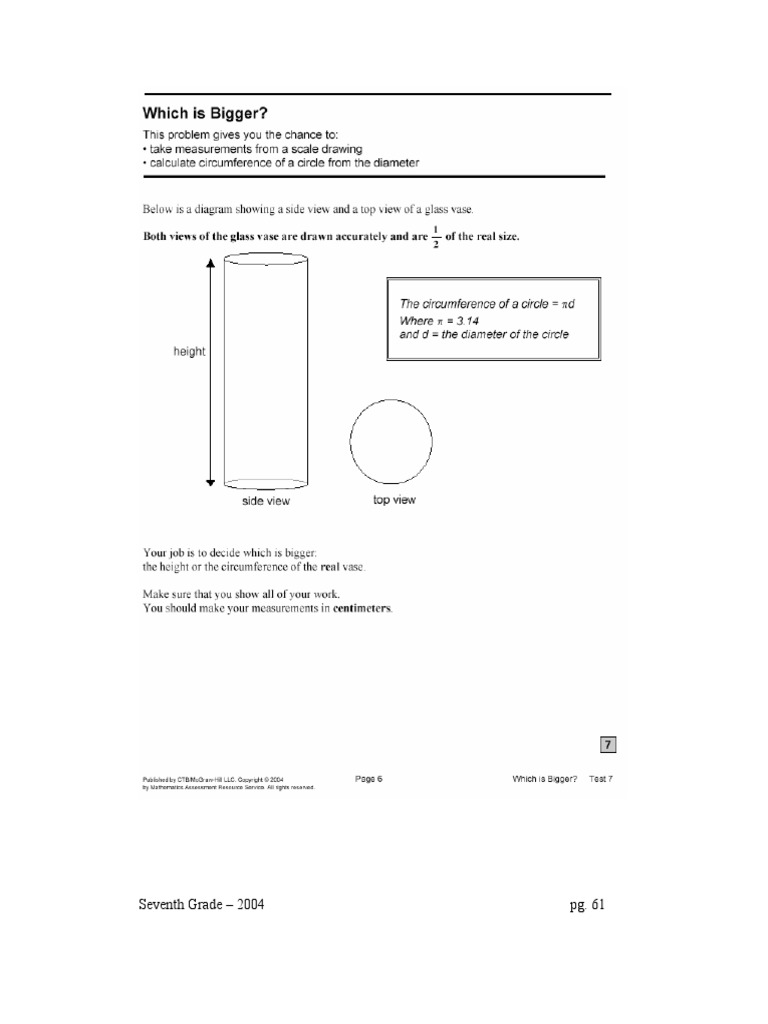Understanding the concept of size is a pivotal endeavor across various domains of knowledge, particularly within mathematics, physics, and more broadly, comparative analysis. The phrase “Which is bigger?” might seem deceptively simple, yet it opens up a Pandora’s box of inquiry that touches upon themes of relativity, dimensionality, and abstract reasoning. Within this exposition, we will explore an extensive array of contexts that reveal the myriad dimensions in which size can be construed, analyzed, and understood.
At the outset, size can denote physical dimensions, encapsulating the tangible aspects of objects. In such discussions, one typically refers to measurements that include length, width, height, or volume. A quintessential example is the comparison between geometric figures. Take, for instance, a square and a rectangle: while it may be intuitive to assume that a rectangle of vastly differing proportions would invariably occupy more area than a square, this is a proposition contingent upon specific measurements. An astute evaluation not only requires high school level geometry but an understanding of area calculation, thus exemplifying the intricacies involved when asking which of two shapes is larger.
Moving beyond simple geometric figures, one can delve into the fascinating realm of higher-dimensional space. For instance, how does one compare the size of a two-dimensional circle with that of a three-dimensional sphere? The comparative analysis here necessitates an acute awareness of volume versus area—and this distinction underscores profound implications in fields such as topology and abstract algebra. Within this context, mathematicians engage with concepts like the n-dimensional hypercube, where inquiries into “largeness” transcend our conventional understanding and require not just spatial intuition but also higher-order mathematical principles.
Furthermore, when considering size in a more abstract sense, one must inevitably confront the philosophical implications of size as a construct rather than an inherent quality. In this framework, figures may be deemed large or small based on a variety of relational perspectives. Compare, for example, an infinitesimally small point in Euclidean geometry to the vast expanse of the universe—size then becomes a relative notion, one that shifts with perspective and context. Such philosophical underpinnings of size invoke disciplines like epistemology, where the study of knowledge itself further complicates the criteria for comparison.
We can also turn our inquiry towards the comparative sizes found in nature, where the juxtaposition of a blue whale against a bacterium reveals an astonishing spectrum of scale. This biological comparison offers insights into evolutionary biology, ecology, and even the biomechanics that govern the movement and function of organisms at vastly different scales. Here, the principles of scaling laws become pertinent; they dictate how size influences function, from the structural integrity of bones in vertebrates to the circulatory system’s efficiency in minuscule organisms. Such exploration prompts questions: How does size dictate ecological niches? What are the evolutionary advantages of specific sizes at various taxa?
Another riveting arena for exploration of size is in the technological realm. The history of computing illustrates a compelling narrative of shrinking sizes over decades. The evolution from room-sized mainframes to palm-sized smartphones raises profound questions about efficiency, capability, and functionality in relation to spatial constraints. The miniaturization of components due to advancements in nanotechnology further blurs the lines surrounding size and capacity, as does the advent of quantum computing, where information is processed on an unprecedented scale that defies traditional comparisons.
In the arena of cosmology, “size” introduces debate about the universe itself. Are we capable of apprehending the vastness of the cosmos? The observable universe, extending approximately 93 billion light-years in diameter, challenges human perception and understanding. Yet even this grand scale is but a fraction of the entire universe, which could be infinite. This comparison invites reflection upon our place within the cosmos and the limitations of human comprehension when confronted with the monumental magnitude of the universe’s expansiveness.
Shifting our focus to the realm of data and information, one might contemplate the increasing sizes of data sets in the digital age, often referenced in terms like “big data.” Unlike tangible objects, data size entails abstract constructs that address bandwidth, processing capacity, and storage. The conversation becomes particularly compelling when likening the ‘size’ of data to its impact—how can one quantify the enormity of a societal shift brought about by a viral meme against the sheer volume of data processed in that instance? The significance here extends beyond numerical value, hinting at the qualitative ramifications of size in a digitized society.
Lastly, within the context of art and aesthetics, size holds an emotional and psychological component that often dictates viewer experience. The immense grandeur of a monumental sculpture versus the intimacy of a palm-sized art piece can elicit vastly different responses, underscoring the subjective dimensions of size. This notion invites discussions about scale in artistry and architecture, where perceived size can manipulate spatial dynamics and audience engagement.
In conclusion, the inquiry into “Which is bigger?” transcends straightforward physical comparisons and invites scholars and enthusiasts alike to ponder philosophical, biological, technological, cosmological, and aesthetic dimensions of size. This seemingly simple question, when scrutinized, leads to a complex tapestry of interrelated themes that reflect not only our understanding of the universe but our place within it. Each realm of inquiry enriches our comprehension of size, unveiling the multifaceted and often paradoxical nature of what it means to be “big” or “small.” As we navigate these discussions, we embrace the complexity and vibrancy of intellectual exploration, illuminating pathways that may inspire future dialogues and investigations.












